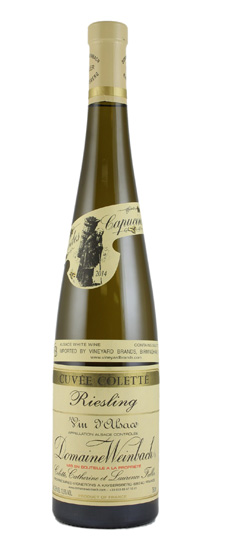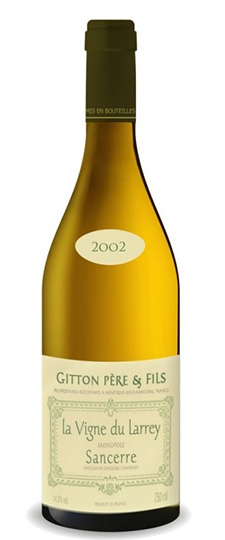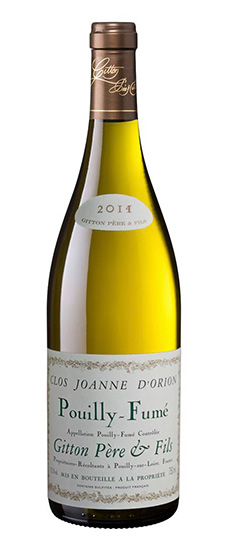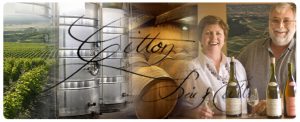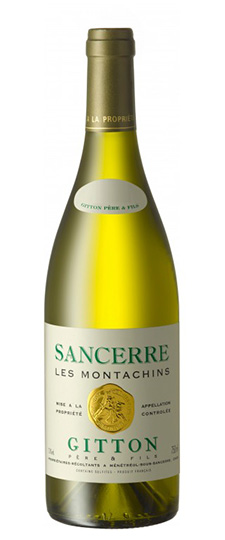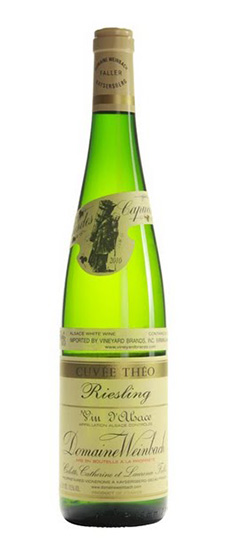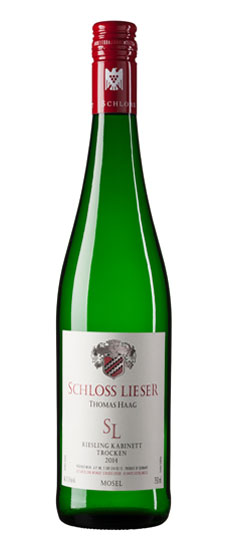Wine Score
Grape Variety
Sauvignon Blanc Wine
Sauvignon Blanc is a white-wine grape from western France, now successfully grown in emerging and established wine regions all over the world. While the grape may be more readily associated with the Loire Valley (for its pivotal role in Sancerre and Pouilly-Fume), it is more likely to have originated from Bordeaux, where it is typically blended with Semillon.
In the late 20th Century, a new region began to gain a reputation as one of the great Sauvignon Blanc regions of the world: Marlborough, at the northern tip of New Zealand’s South Island. The rapid development of the Marlborough Sauvignon Blanc is one of the most dramatic events in the world of wine. The intense and readily accessible flavor of a classic Marlborough “Savvy” (as it is colloquially known in that part of the world) has captured a vast market around the globe, from the United States and Canada to the UK and northern Europe, Australia and Japan. In 2015, Sauvignon Blanc accounted for around 85% of New Zealand’s wine exports.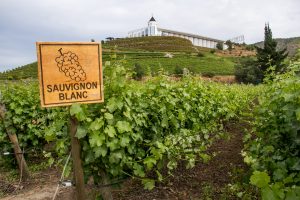
Outside France and New Zealand, the variety has been relatively successful in New World regions such as California, Chile (particularly the Casablanca and San Antonio valleys) and South Africa. Even in Australia the variety can thrive in the cooler coastal areas of the south. In Europe, the cool, sunny sub-alpine slopes of Alto Adige and Friuli in northern Italy produce high quality Sauvignon Blanc, which is used in blends with native varieties like Friulano or on its own.
The key selling point of Sauvignon Blanc is its straightforwardness – the flavors are rarely hidden away in the background. Also, there is a particularly close correlation between the perceived flavors and their descriptors, making Sauvignon Blanc an ideal wine with which to begin wine-tasting lessons.
Classic Sauvignon Blanc aromas range from grass, nettles, blackcurrant leaf and asparagus to green apples and gooseberries, and to more esoteric notes such as cats’ pee and gunflint. The latter is a sign of a wine from Pouilly-Fume, where the struck flint aroma (known there as pierre à fusil) derives from the presence of high levels of chert in the local limestone soils. This effect is so pronounced and consistent that Sauvignon Blanc was once widely known as Blanc Fumé in this part of the Loire.
When combined with Semillon, as it is in most Bordeaux blanc, Sauvignon is found in some of the world’s finest dry white wines. Although generally a minor component, it also plays an important role alongside Semillon in Sauternes, the closest the variety gets to the top end of the wine spectrum. Since the 1970s, this pairing has become the staple white blend in Australia’s Margaret River region.
A relatively robust, vigorous vine (which explains its popularity with viticulturists), Sauvignon adapts readily to all kinds of growing environments. Because it ripens early, it can be grown in relatively cool climates – its Loire homeland being the most obvious example – while its naturally high acidity allows it to retain a level of freshness even in warmer areas. However, to achieve the true, forward zing that best characterizes Sauvignon Blanc wine, a cooler terroir is needed, ideally with persistent bright sunshine and a dry harvest period.
Strange as it may seem, bright, green Sauvignon Blanc has much in common with dark-skinned Cabernet Sauvignon, and not just in the name and region of origin. The bell-pepper and asparagus flavors detectable in wines of both types are down to the methoxypyrazine flavor compounds in both varieties. Also, they are both vigorous growers that produce generous yields and are inclined to produce overly dense canopies in cooler climates. The two varieties are, in fact, genetically related; Sauvignon became the parent to Cabernet Sauvignon after a natural crossing with Cabernet Franc in an 18th-Century Bordeaux vineyard. Both parent and offspring have now become two of the most widely planted vine varieties in the world.
Synonyms include: Fumé Blanc, Sauvignon Bianco, Muskat-Silvaner, Muskat-Sylvaner.
Food matches for Sauvignon Blanc include:
- Broad bean and chèvre salad
- Grilled asparagus with hollandaise
- Bluff oysters with dill and lime vinaigrette
Region
Pouilly-Fume Wine
Pouilly-Fume – a dry white wine made from Sauvignon Blanc grapes – is one of the Loire Valley’s most revered wines. It is rivaled in this regard only by Sancerre, just the other side of the Loire River, and perhaps Vouvray.
The Pouilly-Fume name is composed of two parts. ‘Pouilly’ is short for Pouilly-sur-Loire, the village the wines come from. ‘Fume’ is short for Blanc Fumé , which is the local nickname for Sauvignon Blanc. It is sometimes understandably confused with Pouilly-Fuisse (a Chardonnay-based wine from southern Burgundy). 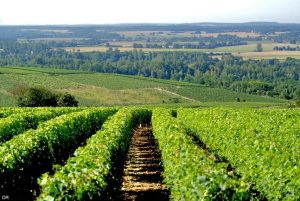
The fumé in Blanc Fumé is French for ‘smoky’. It denotes the struck gunflint aroma that characterizes the local Sauvignon Blanc wines. This distinctive smell is often referred to as pierre à fusil, which means ‘flint’ (literally ‘rifle stone’). It is a key point of differentiation for Pouilly-Fume’s winemakers, and a source of great local pride. Local winemaking legend Didier Dagueneau even named one of his top bottlings ‘Silex’ a traditional synonym for flint. The aroma is thought by some to come from the flint that litters the local vineyards, but this remains unproven.
Aromatically speaking, Pouilly-Fume wines are some of France’s most vivacious, although they are typically less pungent than the notoriously grassy styles of Sauvignon Blanc produced in New Zealand (particularly Marlborough). They have a vibrant streak of green fruit aromas (lime, green apple, gooseberry) supported by mineral aromas of wet wool, slate and smoky flint.
The official Pouilly-Fume viticultural area encompasses seven parishes on the right bank of the Loire – from Mesves-sur-Loire in the south to Saint-Martin-sur-Nohain, a few miles to the north. These villages are technically in Burgundy, although Pouilly-Fume remains a quintessentially ‘Loire Valley’ wine. The Pouilly-Fumé appellation title was created in 1937 (originally as Blanc Fumé de Pouilly) at the same time as the appellation for the village’s Chasselas-based wines, Pouilly-sur-Loire.
Until phylloxera wiped out vast tracts of vines in the 1860s, the vineyards around Pouilly-sur-Loire grew mostly Gamay and Pinot Noir. When the solution to the phylloxera epidemic was identified – grafting European vines onto American rootstocks – Sauvignon Blanc proved to be more responsive to grafting than these red varieties. Thus Sauvignon came to be Pouilly’s most widely planted grape variety.
The 1970s and 1980s saw Pouilly-Fume’s popularity increase greatly, along with the vineyard area devoted to Sauvignon Blanc vines (at the cost of the Chasselas). There were nearly 2840 acres (1150ha) of vines producing Pouilly-Fume in 2005, vastly more than the 105 acres (43ha) planted with Chasselas – a demonstration of the immense success that Sauvignon Blanc has achieved here.
Sauvignon Blanc is known more for its lack of subtlety than its complexity or depth of flavor. It is an ‘obvious’ grape variety. No matter how ideal the vintage, and how skilled the winemaking, a Sauvignon-based wine will always be slightly limited in its complexity. For this reason, the 1980s saw a number of producers introducing an element of oak into their Pouilly-Fume wines, either via barrel fermentation or barrel maturation, or both. The resulting wines were aromatically and texturally more complex than the standard unoaked wines, and also better-suited for mid-term cellaring. Most modern Pouilly-Fume will improve in bottle for between three and six years.
In true French style, the local terroir is given the credit for Pouilly-Fume’s very particular aroma and flavor. It has been intricately studied and mapped. The key soil types are divided into limestone, marlstone, clays of various compositions and the all-important flint. Limestone and flint are the most important. Both have excellent heat-retention and light-reflecting properties and help the vines to achieve optimal ripeness in the cool growing season here.
Producer Notes
Pascal Gitton welcomes you and invites you to discover his wines of Sancerre, Pouilly and Côtes de Duras.
Our Wines
Sancerre
Established in 1945 by Marcel Gitton with barely one acre, the Gitton Père & Fils Estates to-day cover close on 60 acres (27 ha) situated amongst the best areas of the region . The vineyards are located on various distinctive soils of the villages of Sancerre and Ménétréol . These include flint, and different types of chalk.
At present the property is managed by the son Pascal and his wife Denise. The Gitton Family has become notorious over the years for its respect of traditions, the main philosophy of the house …
Since each vineyard has its own specificity, every effort is made to vinify the individual grape harvests separately so as to preserve the subtle qualities resulting from the various soils . Each vineyard is vinified without the use of artificial yeast or enzymes, and “single” bottled in most cases .
All our wines are estate bottled, nor do we deal in any wines other than those from the Estate . Certain white wines are commercialised after several years of maturing in bottles.
The Pinot Noir is vinified as red or rosé (blush) and covers 9 acres (4ha). The rest of the property, 50 acres (23ha) is planted in Sauvignon Blanc, and the average age of the vines is around 30 years.
The Gitton Family’s ambition is to produce distinctive wines, each having its own character, respecting the fruit of the vines, the particularities of the soils, and thus to provide wine-lovers with a range of wines calculated to satisfy the most discriminating palates.
Pouilly
The twin sister of Sancerre, Pouilly is located 6 miles from Sancerre just on the opposite bank of the river Loire. The 16 acres (7,5 Ha) of vineyards of the Gitton Family stretch out on the communes of St Andelain, chalky soils, and Pouilly/Loire, chalky and marly soils. Kimmeridge marl, gives to the Sauvignon ( locally called “Blanc Fumé” ) an extra finesse and the scent of violets typical of the Pouilly Fumé. The acre and a half of Pouilly sur Loire is planted with the varietals Chasselas and Sauvignon. All our wines are vinified in stainless steel vats to keep their fruitiness, and freshness.
Côteaux du Giennois
Also previously known as Côtes de Gien, the Taureau vineyard is located between the hamlets of Bohème and Fontaine Morin, in Cosne sur Loire. Just two hours South of Paris and only a few miles away from Sancerre or Pouilly , the vineyards, overlooking the Nohain valley were already mentioned as early as 1450. The Gitton Family cultivates four and a half acres of Sauvignon and one of Pinot Noir . The Sauvignon is grown on red flint and chalk and the wine resembles its neighbouring appellations : Pouilly and Sancerre. The vines being just ten years of age, certainly, when they reach their full strength the similarity will become even closer …
Côtes de Duras
Purchased in 1989, by the Gitton Family, Chateau Lafon was already exporting its wines to Netherlands in 1762 ! Situated an hour east of Bordeaux the vineyards of Chateau Lafon spread over almost 28 acres (13 Ha) at the highest point of the region on a property of 66 acres (30ha). The amphitheatre shaped slope, where the vineyards are situated, almost unique in the Appellation Duras, enjoys sunlight throughout the day, allowing the vines to gain full benefit of long hours of sun.
One third of the total vineyards has been planted in 1950 and 1952, the rest in the early eighties. The 16 acres (7,5 Ha) of white varietals (Sauvignon, Semillon, Muscadelle) are hand picked, as well as 12 acres (5,5 Ha) of reds (Merlot, Cabernet Franc, Cabernet Sauvignon, Malbec). They are vinified as separate varieties, blended or not according to the vintage conditions

